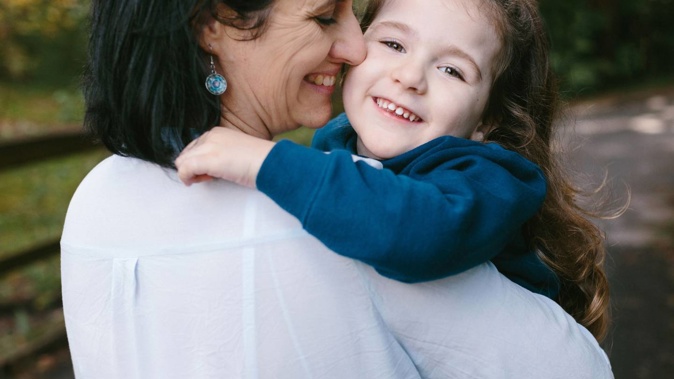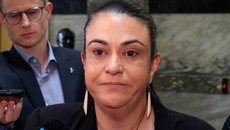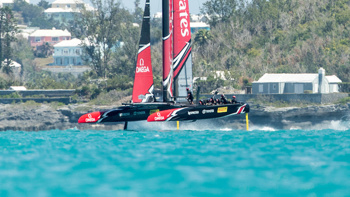
A senior paediatric neurologist at Starship Hospital is concerned babies and infants born with a devastating genetic disorder are being denied life-saving drugs because of inaction at Te Whatu Ora.
Spinal Muscular Atrophy (SMA) is the leading genetic cause of death in New Zealand children under the age of 2. The average life expectancy of an infant born with the most severe form of SMA (Type 1) is 13 months.
In September last year, Pharmac, New Zealand’s drug-buying agency, announced it intended to fund the high-profile drug, Spinraza, to treat children with SMA. In April, it funded a second drug, Risdiplam, which is taken orally and is more accessible.
Treatment is most beneficial when it is administered in babies who are pre-symptomatic.
But Dr Gina O’Grady, a leading specialist in the treatment of SMA at Starship Hospital, says SMA is yet to be added to the Newborn Screening Programme (NSP) which means newborns still aren’t being diagnosed at birth.
“It is incredibly frustrating for our patients and families. It’s crucial to detect this disease in the pre-symptomatic phase in order to save lives and prevent children suffering the crippling impact of SMA on their spine, muscles and respiratory system, but we’re not capturing newborns because we’re simply not testing them,” says Dr O’Grady.
The Newborn Screening Programme is a heel-prick blood test taken at birth which screens for more than 22 disorders. It highlights issues with the flawed SMN1 gene and identifies the disorder before it becomes symptomatic.
In a statement, the Ministry of Health said it was unable to say when or if SMA would be added to the newborn screening programme.
“Te Whatu Ora is considering options for adding SMA to the Newborn Metabolic Screening Programme but no final decision has been made. Therefore, a timeframe for implementation is not available at this time.”
O’Grady says a delayed or missed diagnosis is devastating for babies born with this disease, and in the most severe cases it will lead to a fatal outcome.
“I have supported families over the past three years who have come into my care when the disease is very advanced. At that point, if a baby has advanced Type 1 SMA, there is nothing we can do. Their decline is rapid and I can only support those families through to the end. It is a heartbreaking disease.”
/cloudfront-ap-southeast-2.images.arcpublishing.com/nzme/W2EFAJ2LPJBGXKI6UKDUEXCEFI.jpg)
Emily in PICU in Starship Hospital where she was intubated (mechanically ventilated) to help her breathe. Photo / Supplied
Marion Rogers was living in Gisborne with her husband, Craig, when their daughter, Emily, was diagnosed with Type 1 SMA in November 2019.
She is urging Te Whatu Ora to include SMA on the Newborn Screening Programme as soon as possible to prevent babies suffering or dying from a disorder that is now treatable in New Zealand.
“Emily wouldn’t have lost what she has lost if she had been screened for SMA at birth.”
Marion says if she looks back on the early months of Emily’s life, there were one or two very subtle signs. Emily, now 4 years old, would sometimes arch her back or become rigid in Marion’s arms.
“It was nothing out of the ordinary, and we were always offered reassurance.”
SMA is seldom, if ever, detected by a GP. It requires specialist paediatric intervention, and a series of blood tests.
Emily was almost sitting at 6 months old, but Marion said she felt that her daughter wasn’t gaining strength.
“Then she stopped kicking her legs in the bath and I thought, ‘No. This isn’t right.’ And one thing led to another and we ended up at Gisborne Hospital,” says Marion.
Emily was 8 months old when a blood test confirmed her diagnosis. She had Type 1 SMA – the most severe form. The family say they had “incredible care” at Gisborne Hospital but Emily’s health quickly went into free fall. The faulty gene began to ravage her body and impact her tiny muscles.
“At that point, she was having difficulty swallowing food.”
Biogen, the pharmaceutical company which developed Spinraza, granted Emily compassionate access to the drug. It was funded in Australia but SMA’s “rare disorder” status meant that Pharmac did not consider it a priority medicine.
Marion says she will be forever grateful for the treatment Emily has received, but she is deeply concerned that Pharmac is now funding two treatments for the disorder and our Newborn Screening Programme isn’t testing for it.
/cloudfront-ap-southeast-2.images.arcpublishing.com/nzme/LLHYAWP3NZENROHF6KBWHP2WBQ.jpg)
Emily was diagnosed with Type 1 SMA in November 2019. Photo / Jo Currie
“Twice we have sat with doctors at Emily’s bedside at Starship and they told us to prepare for the worst. Twice she has been emergency flown from Gisborne to Starship by Life Flight because a cold has left her fighting for her life. She is incredibly strong, but this is the most brutal disease. Every day is hard for Emily.”
The family has now moved to Auckland to be closer to Starship, and Emily has spent months in PICU, Starship’s Paediatric Intensive Care Unit. Emily has been intubated many times to open up her trachea and mechanically support her to breathe. One of the risks of intubation is a collapsed lung, and Emily suffered this injury the last time she was mechanically ventilated.
“It was horrendous. She was in hospital for weeks and weeks and they removed the intubation pipe three times, but she had to be reintubated because she couldn’t breathe on her own.”
Marion says it was “touch and go” when doctors said they would remove the intubation tube one last time.
“I can’t tell you what it is like sitting next to your child and willing her to breathe, but she did. She is a strong little girl.”
/cloudfront-ap-southeast-2.images.arcpublishing.com/nzme/4EGZKGENS5HXPE6F7XEQNBZGL4.jpg)
Marion Rogers with her daughter, Emily, who was diagnosed with Type 1 SMA in November 2019. Photo / Jo Currie
Emily has a ventilator to help her sleep at night, and she also wears it if she naps during the day.
“I think what I struggle with most is that Emily is incredibly bright and she loves people, but I am terrified to enrol her in a kindergarten. One cold is enough to send her back to hospital. It’s really hard on families. You live a very reclusive life trying to protect your child.”
Dr O’Grady has advocated for SMA’s inclusion in the Newborn Screening Programme and presented to the National Screening Advisory Committee (NSAC) in July last year. A recommendation was made to pursue a screening pathway for SMA.
O’Grady also met with the Newborn Metabolic Screening Programme Technical Group earlier this year which supports the newborn programme, but she says the process seems to have stalled. Te Whatu says there is no timeline to screen newborns for SMA.
/cloudfront-ap-southeast-2.images.arcpublishing.com/nzme/ESQB4566XRHNRNWBNQC3CFTTBQ.jpg)
Gina O'Grady, a paediatric neurologist at Starship. Photo / Supplied
The disorder occurs in one in every 10,000 births, and O’Grady says between five and six children will present with the disease in New Zealand every year. But in the last two years, only two or three children have been diagnosed, and O’Grady says that is deeply concerning.
“In reality, it means we have children with SMA right now who have not been diagnosed and therefore aren’t receiving treatment. It’s absolutely crucial we are testing newborns because we now have the means to treat this devastating disorder, and we should be treating it.”
Fiona Tolich, one of the founders of Patient Voice Aotearoa, is the New Zealand face of SMA. She ran a four-year public advocacy campaign to fund Spinraza, eventually taking her case to the Human Rights Commission, fronting several protests at Parliament, and presenting to the United Nations.
Tolich says she has spent years beating on the door of Pharmac trying to make it see the value in funding Spinraza, and she is devastated newborns are still not being screened.
“We have an obligation and opportunity to save these children. We have an excellent newborn screening programme and we have lifesaving medicines. So what is the issue? We had to fight so hard to get access to these medicines. It is a travesty that we may have to fight for this too,” says Tolich.
In a cruel irony, Tolich moved her family to Australia in January so she could access Spinraza. The mother of two has a less severe form of the disease and Spinraza ensures she retains her mobility. The treatment is fully funded in Australia, but in New Zealand, Pharmac only funds the drug for New Zealanders up to the age of 18 years old.
“It’s pretty gutting I had to leave New Zealand to get treatment for myself but I left believing that at least children with SMA and newborns would now get access to it. It is devastating to think that Pharmac has finally funded a treatment, but no progress has been made to diagnose SMA in newborns.”
O’Grady says if the Government is looking at ways to address health inequity and ease the burden on the health system, it should prioritise adding SMA to the newborn screening programme.
“If we get to children late, they will either die or become dependent on our health system for the rest of their lives – and it’s a dependency that will cost our health system millions”
The Newborn Screening Programme currently screens newborns for more than 22 metabolic disorders.
Take your Radio, Podcasts and Music with you









